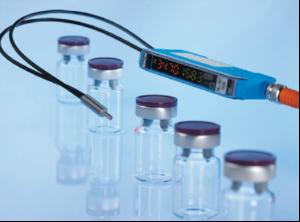

|
Edward Lowton
Editor |


|
| Home> | Plant, Process & Control | >Sensors and instrumentation | >Fast response |
ARTICLE
Fast response
25 January 2013
New from SICK (UK) the WLL180T photoelectric sensor with fibre-optic cable boasts a response time of just 16µs and has been developed to enable rapid, reliable object detection of fast production processes, even in hard

New from SICK (UK) the WLL180T
photoelectric sensor with fibre-optic
cable boasts a response time of just
16µs and has been developed to
enable rapid, reliable object detection
of fast production processes, even in
hard-to-reach machine and system
locations.
The WLL180T, which can detect even the fastest process operations - up to 31,250 per second, without the loss of reliability - is suitable for use in the semiconductor, electronics, and pharmaceutical industries, as well as in assembly handling and robotics. The sensor is able to achieve high scanning ranges, of up to 20m, even in ambient conditions. Featuring high system reserves, the powerful light beam can penetrate dust clouds, spray, mist or water jets, to reliably detect objects.
The WLL180T, which can detect even the fastest process operations - up to 31,250 per second, without the loss of reliability - is suitable for use in the semiconductor, electronics, and pharmaceutical industries, as well as in assembly handling and robotics. The sensor is able to achieve high scanning ranges, of up to 20m, even in ambient conditions. Featuring high system reserves, the powerful light beam can penetrate dust clouds, spray, mist or water jets, to reliably detect objects.
MORE FROM THIS COMPANY
- SICK's smallest safety laser scanner
- Sensor Integration Machines boost SICK's 'edge' processing power
- High speed ID
- Light curtain
- Safety-certified encoder protects operators with safe motion control
- Photoelectric sensors
- Sensor suitability: Selection matters
- High levels of accuracy
- Distance sensing
- Ten second sensor change
OTHER ARTICLES IN THIS SECTION

















